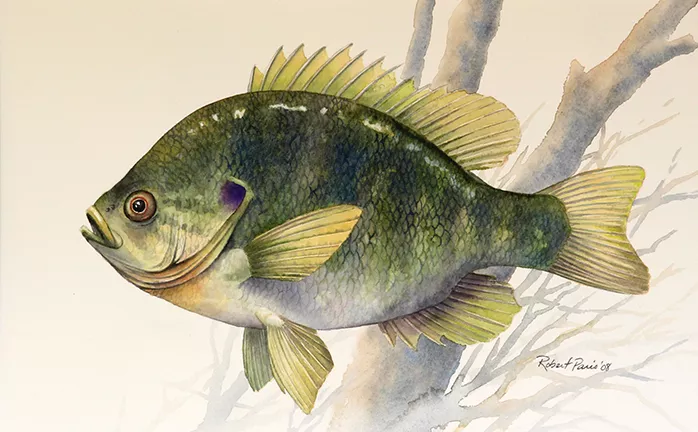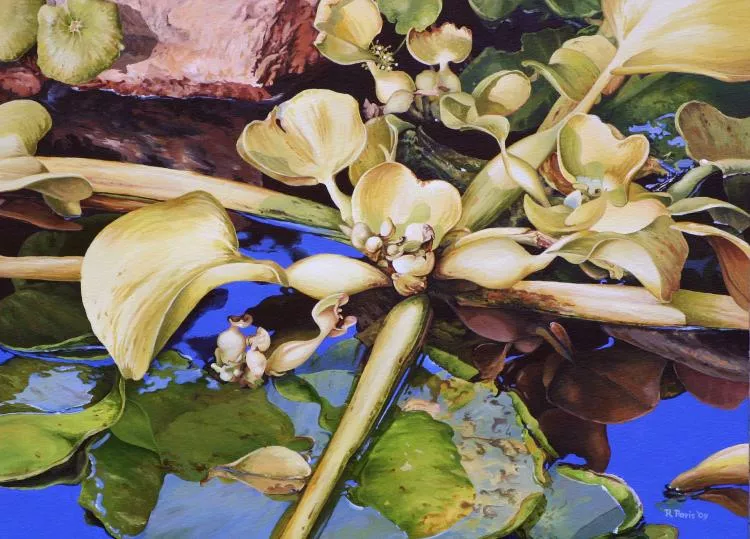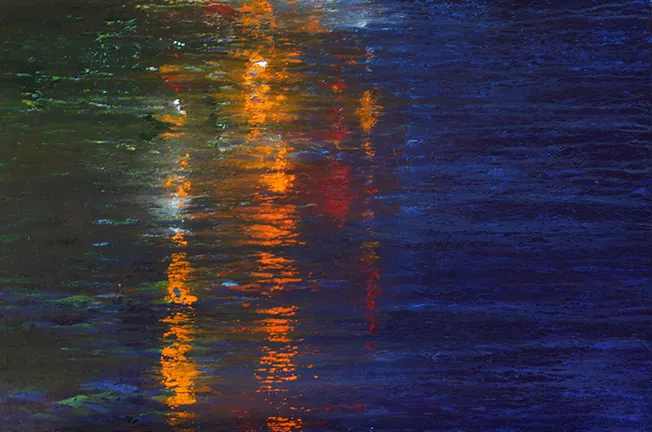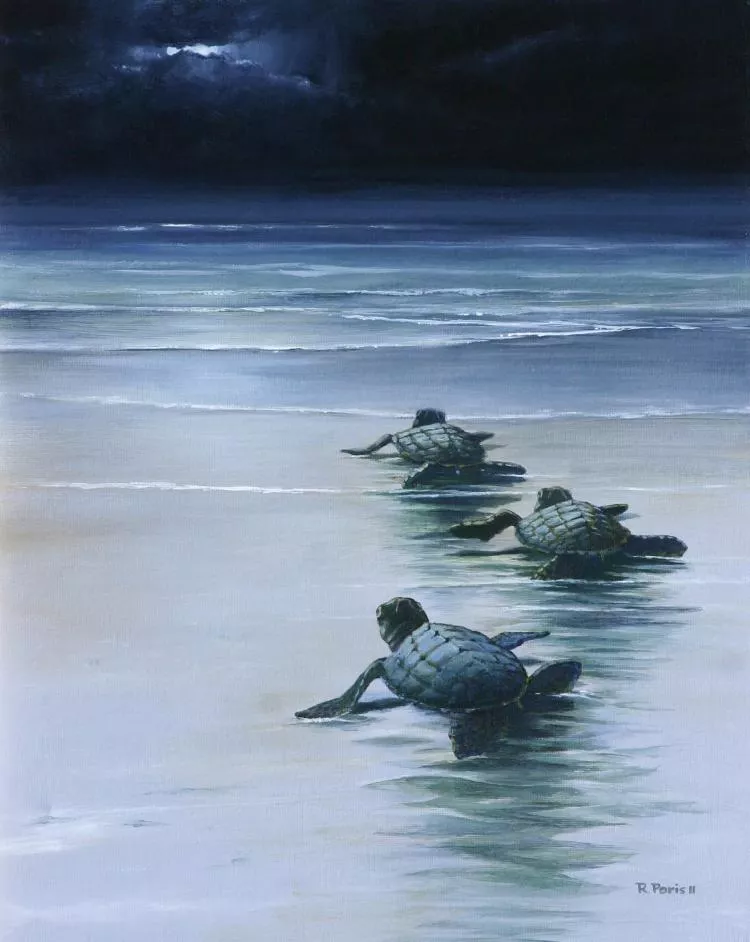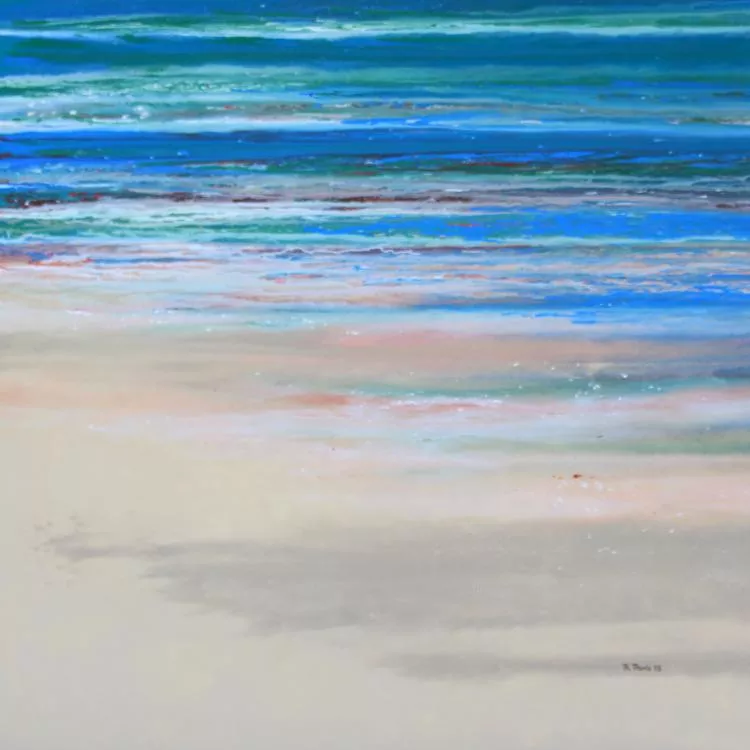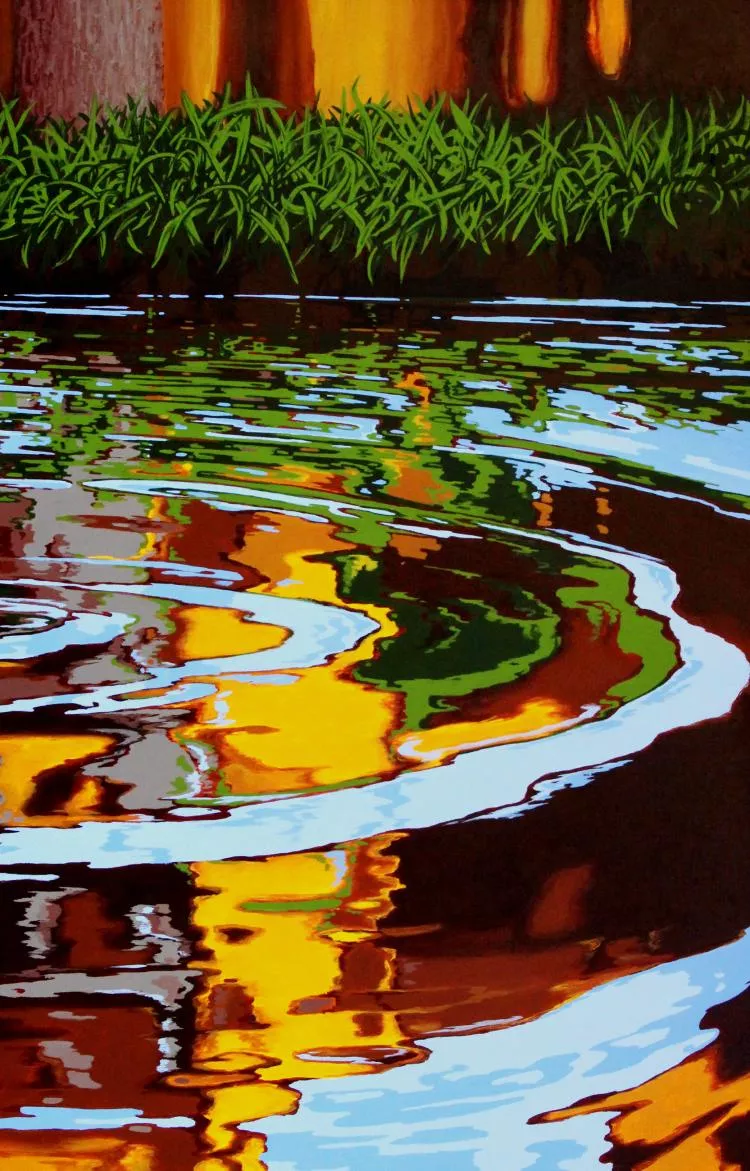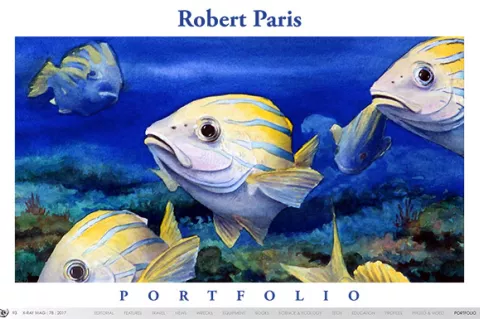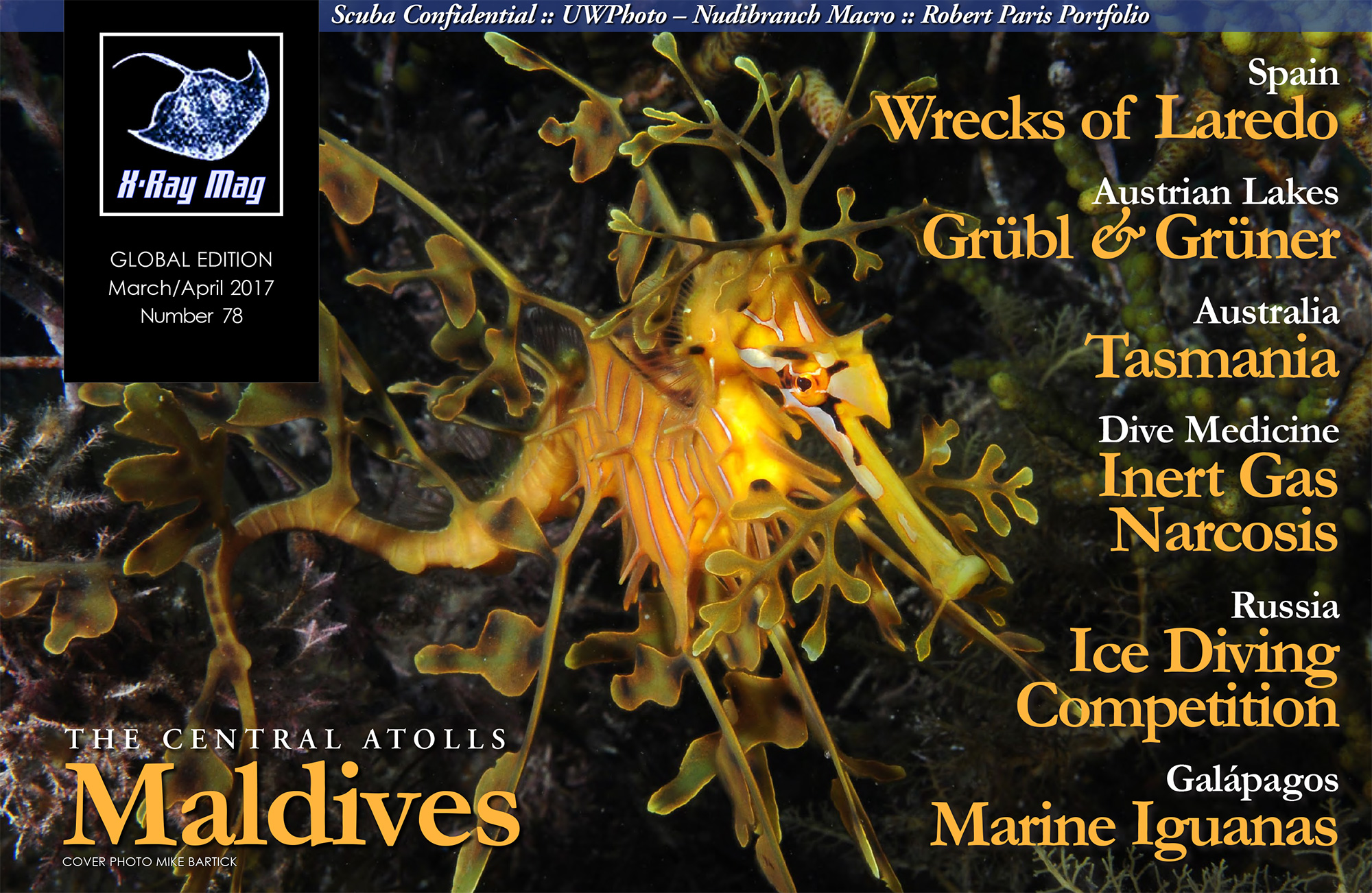Originally from Virginia, American artist Robert Paris grew up loving the outdoors and the natural world around him. After a career in graphic design working with marketing groups, he decided to give up the corporate life and pursue his passion for painting. Today, if he’s not fishing or gardening, he is creating sublime watercolors of fish and acrylic paintings of marine environments, with some close-up compositions of water and reflections so photo-realistic that they become nearly abstract in color and form.
Contributed by
X-RAY MAG: Tell us about yourself, your background and how you became an artist.
RP: I grew up in the mountains of Virginia where I spent most of my time fishing and floating on the small rivers and streams. This exposure to rushing water created a lasting impression on me that I still carry with me today. I attended the Art Institute of Atlanta and became a graphic designer/creative director. After 15 years of doing this, I felt it was time to dedicate myself to painting full-time. So, in 2002, I started this latest chapter in my adventure.
X-RAY MAG: Why fish and marine life? How did you come to this theme and how did you develop your style of painting?
RP: My grandfather took me fishing when I was four years old, and I have been fascinated with aquatic life ever since.
X-RAY MAG: What is your artistic method or creative process?
RP: I really don’t have a set process. I get an idea or see something that peaks my interest, and I try to execute it—some paintings work and some don’t.
X-RAY MAG: Tell us about your fish watercolors. They seem to be very fresh and lively, yet rooted in tradition. Were you inspired by the 18-19th century naturalist and ichthyologist illustrations? And how did you get such detail in the paintings?
RP: My watercolors of individual fish came about in two parts. Originally, I was doing sketches or studies for some wood carvings that I wanted for my personal collection. After completing these carvings, I thought that they would make nice paintings in a [John James] Audubon style. I love the combination of fine detail and subtle color against the stark white background. Fine-detail work comes naturally to me and I believe it is this fine detail that brings these images to life.
X-RAY MAG: Your paintings of water surfaces are intriguing. Please tell us about your inspiration and approach here. What was it about the water that inspired you to create paintings such as Ripple Effect, Mast in the Harbor, and A Walk on the Beach? What is the story behind each painting?
RP: As I mentioned before, I have been a fisherman since I was a young boy and have had the opportunity to experience moving water in every form—from the smallest mountain stream to the breathtaking open ocean. Through my work, I try to capture these memories.
Water is a wonderful and challenging subject for a number of reasons. It is alive. It is seldom a single color and it is a mirror of all that surrounds it.
The painting, A Walk on the Beach, was inspired by countless hours on the Carolina coast. I used a technique in which I mixed my acrylic paints to be liquid and then poured it on, slowly allowing gravity to pull it down the canvas. It is a real back and forth process, but in the end, it created the feeling of being at the edge of the surf.
Ripple Effect was inspired by an object striking the water’s surface, creating the recognizable rings. Again, I was trying to branch out of my usual style and tried to keep the fine details to a minimum.
Lastly, the painting entitled Water at Night was my attempt to capture a memory from a trip to Key West, Florida. My wife and I love to have dinner and stroll along the harbor at night. The lights danced in the light surface chop.
X-RAY MAG: Mast in the Harbor is such a close-up, close-cropped, photo-realistic yet ingeniously minimalistic composition of a reflection on water, it looks nearly like an abstract painting... Please tell us your inspiration here and what your approach or purpose was in this painting.
RP: In my painting entitled Mast in the Harbor, I was trying to create a more modern-styled painting than my usual work. This was accomplished by keeping my brush stokes very loose and inverting my colors. By inverting I mean, that the water was painted white and the reflection of the sailboat was given the colors found in the water.
X-RAY MAG: Are you a scuba diver or snorkeler and how have your experiences underwater influenced your art?
RP: I have never been scuba diving and rarely been snorkeling. However, I understand the attraction to the sport and can only imagine the peace it must bring the diver.
X-RAY MAG: What are your thoughts on ocean and freshwater conservation and how does your artwork relate to these issues?
RP: I know that without the heathy natural and man-made reefs and tidal estuaries, the sport of fishing would be greatly impacted. I wish more people thought about how their day-to-day activities impact these resources.
X-RAY MAG: Why art? Why is it important?
RP: Why art? I really don’t know. I was born with a creative gene, which drives me every day. I try to create something positive for others to enjoy.
X-RAY MAG: What are the challenges of being an artist in the world today?
RP: The biggest challenge for me is trying to put all of my thoughts on paper or canvas. There are just not enough hours in a day.
X-RAY MAG: What is the message or experience you want viewers of your artwork to have or understand?
RP: I like a quiet environment and try to convey that with my work and subject matter.
X-RAY MAG: How do people respond to your works?
RP: Most people think it is a photo—it is only after they have been shown that it is a painting that they really start to study the details and understand the complexities of the work. Most people young and old seem to enjoy my work because it usually reminds them of a fond memory.
X-RAY MAG: What are your upcoming projects, art courses or events?
RP: Lately, I have not been painting as often because I have been building furniture from reclaimed lumber. This has been a fun and challenging new way for me to explore my creativity. I work in cycles—sometimes you have to change things in your routine to get a new perspective.
For more information or to purchase original art, please visit the artist’s websites at: Etsy.com/shop/robertparis or Bluewater-design.com. And on Pinterest at: Robert Paris Fine Art.
I was born with a creative gene, which drives me every day. I try to create something positive for others to enjoy.
— Robert Paris

